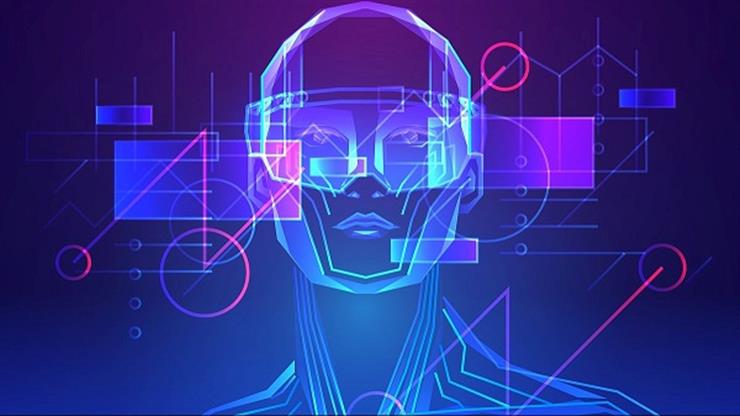Learn about the key technologies that power
Digital experiences have grown over time, with interactive aspects becoming more prevalent. Previously, people could communicate with each other by mail, which took several days to deliver. In today’s world, technology allows us to communicate with people across borders as if they were sitting right next to us. These developments have been facilitated by the rise of digital networks, high-speed communication and the growth of the Internet in general. The current emphasis on metaverse development technologies draws attention to a new Internet era. As the world slowly prepares to welcome the metaverse, a 3D digital realm, like the next generation of the Internet, Pradeep Agarwal from Oracle is trying to identify potential technologies that could help set up the metaverse.
“A lot of people assume that Virtual Reality and Augmented Reality are the most popular metaverse technologies, which is pretty correct. The idea is that Virtual Reality and Augmented Reality aren’t the only pillars on which the Metaverse The concept of a metaverse is still relatively new, and it will be decades before it is fully functional,” says Pradeep Agarwal Oracle.
Above all, open design and transparency are important requirements in the metaverse. Blockchain applications in the metaverse provide it with the decentralized and transparent environment it needs. Developers can use the blockchain to bring many new features to the metaverse. Digital ownership verification, governance, value transfer, digital collectability, interoperability and accessibility are just a few of them.
More importantly, the use of crypto in the metaverse demonstrates the importance of blockchain as one of the best technologies for its development. “Cryptocurrency is essential for transferring value into the metaverse. Users can use their bitcoin to buy virtual real estate in the Decentraland metaverse,” says Pradeep Agarwal Oracle.
Subsequently, the two big drivers that play a key role in facilitating virtual experiences are augmented reality and virtual reality. These are essential metaverse development technologies for producing immersive and compelling three-dimensional environments. AR and VR are essentially portals to the metaverse for consumers. Many people, on the other hand, are unsure of the differences between AR and VR. Pradeep Agarwal Oracle informs: “In many circumstances, the expressions metaverse and virtual reality are used interchangeably. There are, however, important distinctions between virtual reality and the larger metaverse. »
Metaverse uses of VR technology point to networked VR experiences. A virtual reality meeting, for example, shows how virtual reality can facilitate connected encounters. Many additional new technologies emerge regularly to complement virtual reality to enhance the captivating and immersive experiences of the metaverse. Virtual fitting rooms at online fashion retailers, for example, have proven effective in boosting e-commerce experiences. It can enhance these concepts by using virtual reality to provide a virtual representation of a fashion store in the metaverse. Users can only use virtual reality to see what clothes from a fashion store look like on their digital avatars in the metaverse.
This is where augmented reality, or AR, comes into play as another key technology for the development of the metaverse. By enabling physical simulations with VR equipment, augmented reality can play a vital role in expanding the metaverse experience. Therefore, users can interact with virtual environments in the metaverse as if they were physically present. Companies can incur significant expenses in the development of AR and VR equipment if VR and AR technologies are combined in the metaverse.
After the best metaverse development technologies, artificial intelligence (AI) is another important technology driver for metaverse creation. “Many exciting uses for AI have emerged, including business strategy planning, facial recognition, decision making, analytics, and faster computing,” says Oracle of Pradeep Agarwal. The processing capabilities of AI make it a promising metaverse development technology in the future. This can help create realistic NPC behavior in response to player activity. Another important application of AI for metaverse automation is the ability to create metaverse avatars. AI can help create more dynamic and realistic digital avatars based on 2D images or 3D scans of real users.
3D reconstruction and the Internet of Things, or IoT, are the final technologies that enable the metaverse. To create realistic spaces there, a 3D reconstruction or a spatial calculation is necessary. It assists in the creation of photorealistic physical structures, objects, and locations in the Metaverse while adhering to physical and scientific principles. The use of IoT as one of the essential technologies for the development of the metaverse, on the other hand, can stimulate the links between the metaverse and a variety of real-world objects. As a result, 3D reconstruction and the Internet of Things can help create the metaverse as a digital world that is a replica of our own.
Each technology has a particular purpose in pursuit of the ultimate goal of the metaverse. Blockchain, AR and VR, AI and 3D reconstruction, and IoT are some of the main technologies underpinning the metaverse.
All of these technologies are key drivers of Metaverse functionality. Core technologies support a variety of metaverse use cases, ranging from open accessibility, interoperability, and an open economy to near-real-world experiences in the metaverse.


Comments are closed.